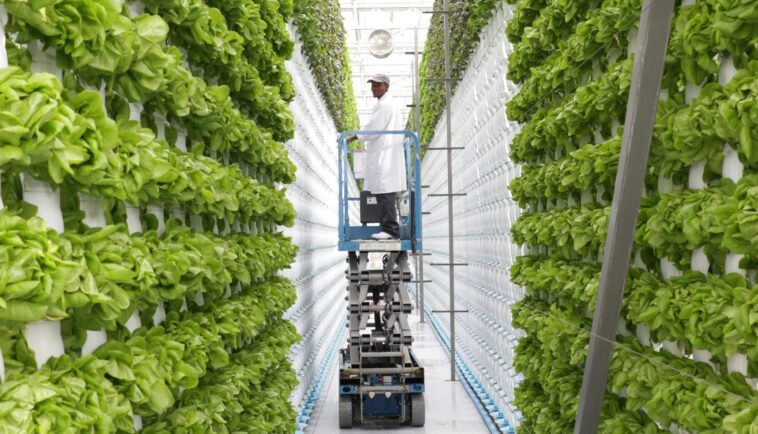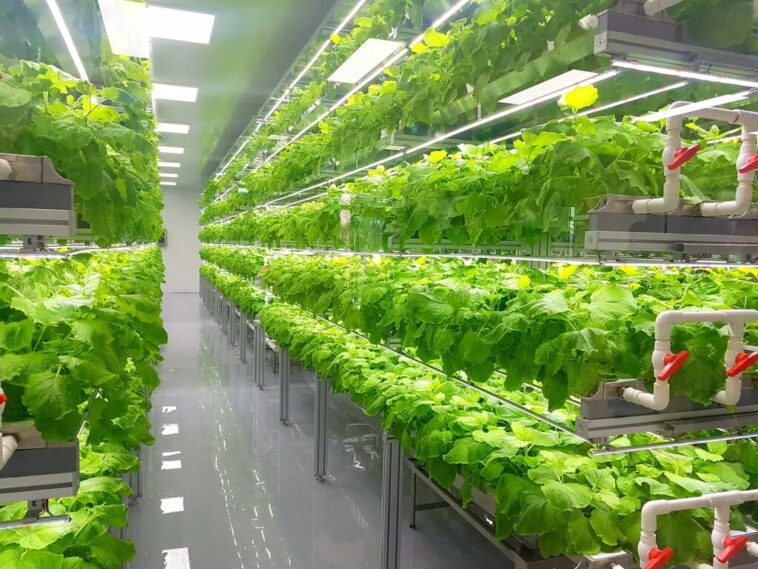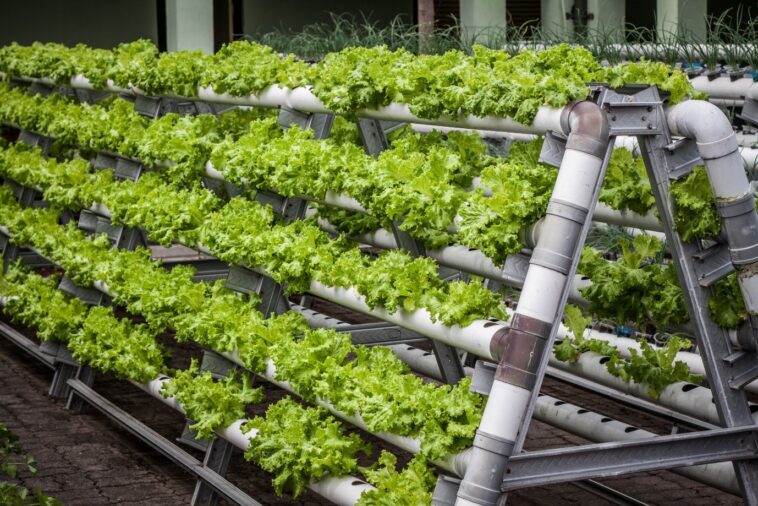Vertical farming is an innovative approach to agriculture that stands in stark contrast to traditional farming methods. In this section, we will explore the basics of vertical farming, its origins, and why it’s becoming increasingly important in our rapidly urbanizing world.
Understanding the Basics

Growing crops in layers that are piled vertically is known as vertical farming, and it frequently makes use of controlled environment agriculture (CEA) technology. Indoor farming techniques are used in this manner, where temperature, light, and humidity are all regulated.
The idea came about because of the necessity to increase food production in a constrained area, particularly in cities where traditional farming is impractical. In addition to saving space, this technique enables crop production all year round, regardless of the outside weather.
The Rise in Popularity
The popularity has surged in recent years, primarily due to the growing concerns over food security and sustainable agricultural practices. With the world’s population projected to reach 9.7 billion by 2050, there is an increasing demand for innovative solutions to produce sufficient food.
Vertical farming, with its ability to yield more per square foot than traditional farming, presents a viable solution to this challenge. Moreover, it significantly reduces the need for water and pesticides, making it a more eco-friendly option.
Key Components of Vertical Farming

Delving deeper into vertical farming, it’s important to understand its key components. This section highlights the technological and environmental aspects that make vertical farming a sustainable choice.
Technological Innovations
At the heart of vertical farming are cutting-edge technologies. Hydroponics, aeroponics, and aquaponics are among the most common techniques used. Hydroponics involves growing plants in nutrient-rich water without soil, aeroponics is the process of growing plants in an air or mist environment, and aquaponics combines fish farming with plant cultivation.
Advanced LED lighting mimics sunlight and can be adjusted to cater to the needs of different plants. Automation and AI play crucial roles in monitoring and adjusting environmental conditions, ensuring optimal growth conditions.
Environmental Impact and Sustainability
The environmental impact is significantly lower than that of traditional farming. It uses up to 70% less water, thanks to recycling and reduced evaporation. Since these farms can be established near urban centers, they reduce the need for transportation, leading to lower carbon emissions. Additionally, it requires less pesticide and herbicide use, contributing to a healthier ecosystem. The closed environment also prevents the loss of nutrients to the environment, making it a more sustainable form of agriculture.
The Future of Vertical Farming

As we look toward the future, it appears to be a crucial element in the quest for sustainable agriculture.
Potential for Global Impact
Global food production might be revolutionized by farming vertically. In cities, it may supply local, fresh vegetables, lowering food miles and enhancing food security. It may significantly alter the landscape in areas with severe weather patterns or little arable land.
Conclusion
In conclusion, vertical farming is not just a futuristic concept but a viable, sustainable solution that addresses many of the challenges facing traditional agriculture. By embracing this technology, we can take a significant step towards a more sustainable and food-secure future.





